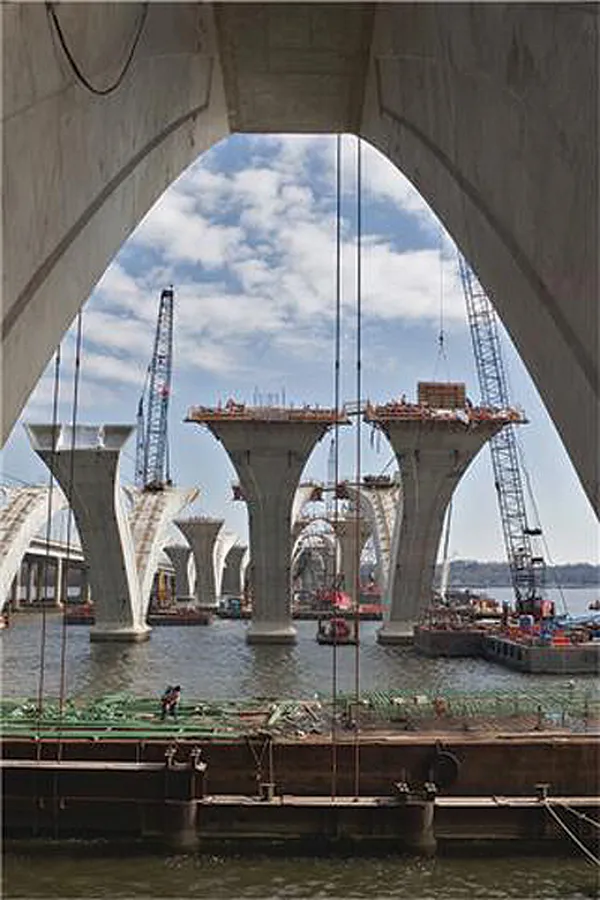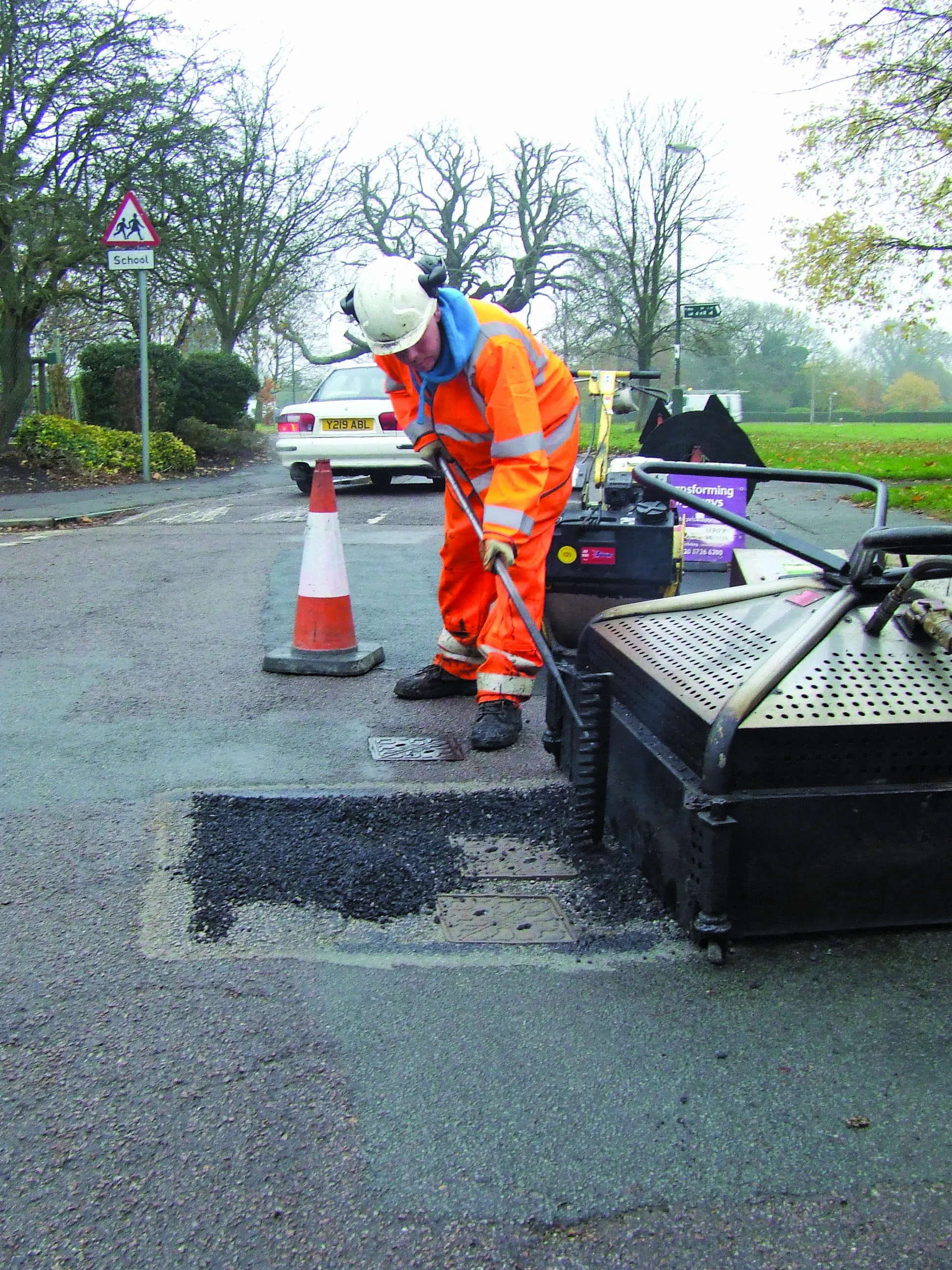The US infrastructure network requires urgent attention - * T Peter Ruane. America's transportation infrastructure was once the "shining light on top of the hill." Major investments in a national highway, bridge, transit, airport, port and waterway system during the 20th century paid great dividends. The free and efficient flow of goods and people across the 50 states led to unparalleled economic expansion. The mobility and prosperity resulting from an interconnected infrastructure was a model for the world
February 27, 2012
Read time: 6 mins

The US infrastructure network requires urgent attention - * T Peter Ruane
America's transportation infrastructure was once the "shining light on top of the hill." Major investments in a national highway, bridge, transit, airport, port and waterway system during the 20th century paid great dividends. The free and efficient flow of goods and people across the 50 states led to unparalleled economic expansion. The mobility and prosperity resulting from an interconnected infrastructure was a model for the world.Regretfully, however, the US network is now in danger. It provides a warning sign to other nations of the costs of losing sight of the need for continued transportation investment.
Despite widespread acknowledgement of the competitiveness of world trade, the pace of America's transportation improvements has fallen behind the modernisation efforts of China, the
America has 257,600km of highway pavement rated unacceptable and 152,000 bridges, nearly 25%, have been deemed either structurally deficient or functionally obsolete.
The US roads and bridges were not designed for the volume of freight and the number of commuters they carry today and the network cannot cope with the expected doubling of freight over the next 25 years.
Estimates of the total investment shortfall by all levels of government, just for maintaining the current system, range from US$134- $194 billion/year for 2008-2035. To improve existing transportation systems, the shortfall is even larger: $189-$262 billion/year over the same time period. Looking at just the federal government share of support for transportation, estimates of the average annual funding shortfall range from $60-$87 billion/year for maintaining the system and $85-$118 billion for improving the system. In short, the investment needs are staggering.
The consequences of underinvestment ripple through the US economy. Companies build the cost of transportation into their products. According to the
Studies of America's transportation challenges have turned into a cottage industry.
There have been a series of reports from two congressionally-appointed blue ribbon commissions, and numerous public and private sector organisations. These include: Well Within Reach: America's New Transportation Agenda from the University of Virginia Miller Center of Public Affairs (2010); Paying Our Way: A New Framework for Transportation Finance, the National Surface Transportation Infrastructure Financing Commission (2009); Performance Driven: A New Vision for US Transportation Policy, the National Transportation Policy Project of the
ARTBA, allied industry associations and business groups such as the US Chamber of Commerce have also highlighted the relevant issues and put forth policy proposals for Congress and the US president to consider.
While each of the reports has its own differences, there is unanimous agreement on at least three fronts. Firstly, they agree that chronic underinvestment is taking an everincreasing toll on America's economic health and global competitiveness. Secondly, they agree there is an urgent need for a new vision and approach for the future of the nation's transportation network. Thirdly, they agree the problem will not be solved unless significant new revenue is generated through a variety of financing options.
US policymakers and politicians have acknowledged the overwhelming empirical evidence in these reports and know what needs to be done. Yet, in a colossal failure of leadership, the US Congress has continually delayed action.
Like many European nations, America is in the midst of an austerity debate. The
When it comes to transportation, however, the facts tell a different story. Internationally respected research firm Global Insight estimates that every additional $1 billion in federal outlays for highway and transit capital investments increases the nation's Gross Domestic Product by $2.19 billion, disposable income by $977 million and federal tax revenues by $770 million. Conversely, disinvestment or deferred investment, leads to losses in productivity and international competitiveness, wasted fuel and increased adverse health and environmental impacts.
Virtually everything people wear, eat and use every day in America comes to them via the surface transportation system.
Strengthening and improving this system will help alleviate business uncertainty and unemployment by creating jobs. It will also lead to greater long-term economic productivity and international competitiveness, both outcomes essential to restoring a country's fiscal health.
These realities are often ignored by the US Government.
ARTBA is leading a multi-pronged effort to achieve a level of long-term investment in America's transportation network that will meet the demands of an ever-growing population and dynamic economy. It has turned out to be the toughest challenge in organisation's history.
For the past four years, ARTBA has been advocating a new approach and vision that offers the greatest construction market development opportunity in a generation.
Currently, there is no comprehensive, strategic initiative to address America's freight challenges and handle the expected doubling of truck traffic in the next 25 years.
Strong leadership by the federal government is necessary to fill this policy void. ARTBA has proposed a more accountable, structure for the federal highway programme consisting of two, equally important components, each with a clearly defined mission.
The first proposes expanded federal investment to preserve and improve existing highway and transit systems, and to protect past national infrastructure investments, particularly in the Interstate Highway System.
When it comes to transportation, however, the facts tell a different story. Internationally respected research firm Global Insight estimates that every additional $1 billion in federal outlays for highway and transit capital investments increases the nation's Gross Domestic Product by $2.19 billion, disposable income by $977 million and federal tax revenues by $770 million. Conversely, disinvestment or deferred investment, leads to losses in productivity and international competitiveness, wasted fuel and increased adverse health and environmental impacts.
Virtually everything people wear, eat and use every day in America comes to them via the surface transportation system.
Strengthening and improving this system will help alleviate business uncertainty and unemployment by creating jobs. It will also lead to greater long-term economic productivity and international competitiveness, both outcomes essential to restoring a country's fiscal health.
These realities are often ignored by the US Government.
ARTBA is leading a multi-pronged effort to achieve a level of long-term investment in America's transportation network that will meet the demands of an ever-growing population and dynamic economy. It has turned out to be the toughest challenge in organisation's history.
For the past four years, ARTBA has been advocating a new approach and vision that offers the greatest construction market development opportunity in a generation.
Currently, there is no comprehensive, strategic initiative to address America's freight challenges and handle the expected doubling of truck traffic in the next 25 years.
Strong leadership by the federal government is necessary to fill this policy void. ARTBA has proposed a more accountable, structure for the federal highway programme consisting of two, equally important components, each with a clearly defined mission.
The first proposes expanded federal investment to preserve and improve existing highway and transit systems, and to protect past national infrastructure investments, particularly in the Interstate Highway System.
| Author: *T Peter Ruane is president and CEO of the American Road & Transportation Builders Association |







